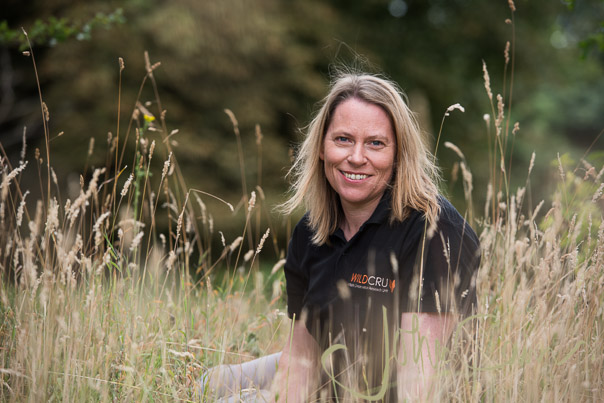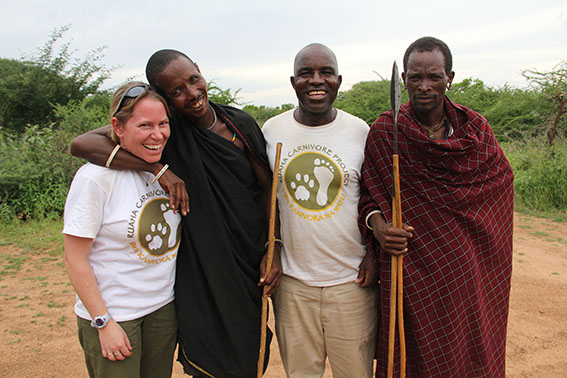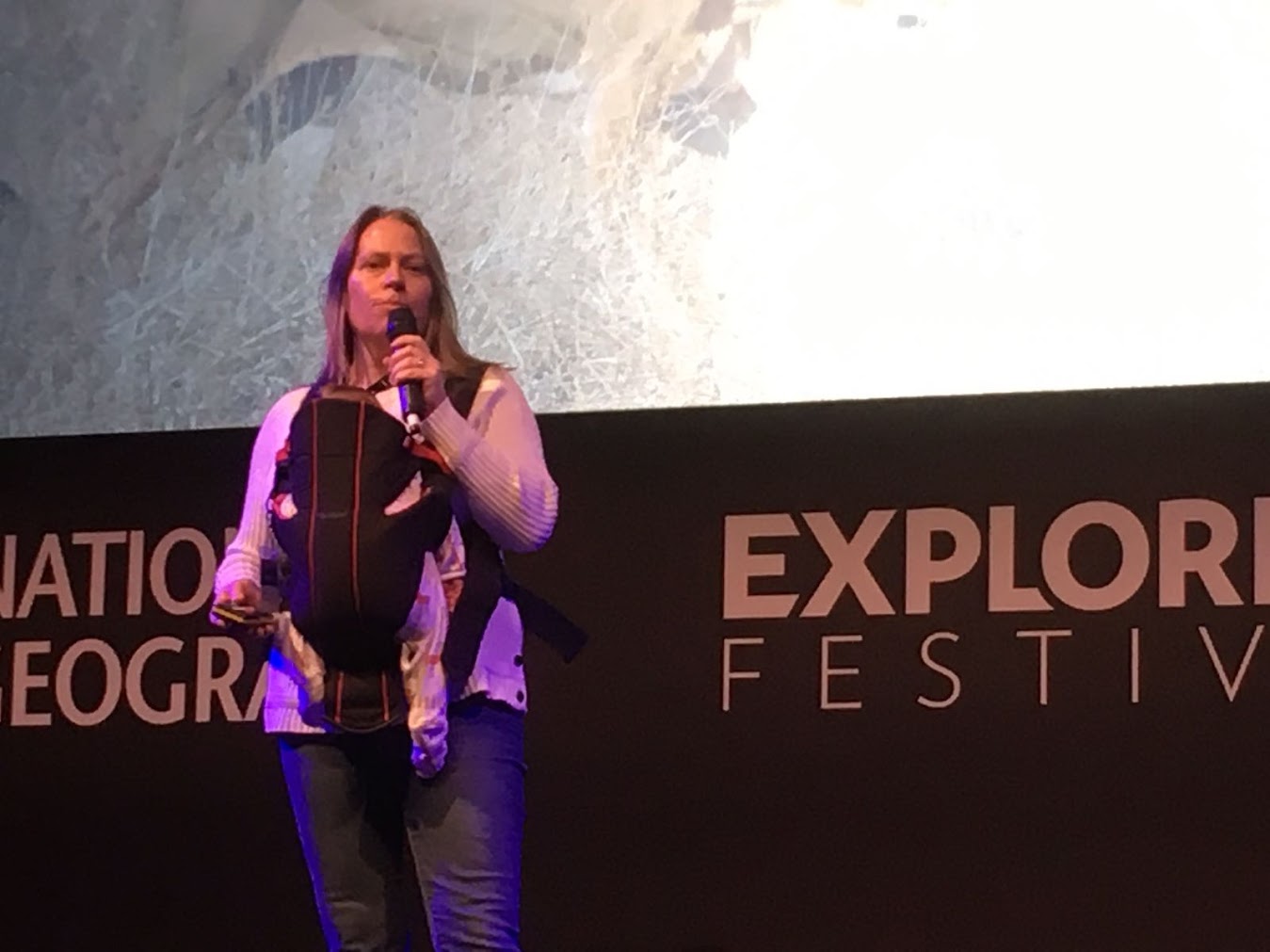
WildCRU Director and Professor of Wildlife Conservation
Professor Amy Dickman
Professor of Wildlife Conservation | Kaplan Senior Research Fellow at Pembroke College | Joint CEO of Lion Landscapes | Fellow of the Linnean Society of London | Chair of the Board, Arabian Leopard Fund
PROFILE
Amy is WildCRU’s Director, having taken over from Professor David Macdonald in 2022, and is a Professor of Wildlife Conservation at Oxford University. She has worked in conservation for nearly 30 years, with a particular focus on community-based carnivore conservation in Africa. She is the joint founder and joint CEO of Lion Landscapes, a WildCRU-affiliated project and NGO which tries to ensure that the global value of wildlife conservation is translated down to the local level, so that the presence of wildlife becomes a net benefit to the people living closest to it.
Amy has always been passionate about wildlife, particularly big cats, and first joined WildCRU straight after her undergraduate degree. She spent six years working with Dr Laurie Marker at the Cheetah Conservation Fund in Namibia, then went on to do her MSc and PhD work examining human-carnivore conflict in Tanzania’s Ruaha landscapes. That led to the founding of the Ruaha Carnivore Project in 2009, which later merged with Dr Alayne Cotterill’s work in Kenya and Zambia to form the overarching Lion Landscapes project.
As a member of various IUCN SSC Specialist Groups, including the Human Wildlife Conflict and Coexistence Specialist Group, the Sustainable Use and Livelihoods Specialist Group, and the Cat Specialist Group, Amy engages widely on conservation issues.
She has published extensively on human-wildlife conflict and coexistence, is the Chair of the Arabian Leopard Fund, and plays a key role in many of WildCRU’s themes. She is passionate about science communication, talking to the media, politicians and other groups on conservation issues to try to ensure that conservation decisions are based on the best available evidence, particularly when it comes to contentious topics. Amy is also passionate about ensuring that conservation is more inclusive and equitable, and that conservation science is not focused on academic progress alone, but leads to substantial real-world positive impacts for both people and wildlife.
She is also a mother to two young children (and owner of an energetic young German Shepherd, which is even more work!) and is an advocate for people being able to have a good work-life balance. Amy and Alayne are two of the six co-founders of the Pride Lion Conservation Alliance, which prioritises collaboration and partnership between conservationists so they can be happier and want to stay in their careers longer, both of which contribute to greater long-term success.


SELECTED PUBLICATIONS
Evaluating the effectiveness of fortified livestock enclosures as a human-carnivore conflict mitigation tool in Tanzania’s Ruaha landscape
Public perceptions of trophy hunting are pragmatic, not dogmatic.
Evaluating key evidence and formulating regulatory alternatives regarding the UK’s Hunting Trophies (Import Prohibition) Bill
Socio-political and ecological fragility of threatened, free-ranging African lion populations
A review of financial instruments to pay for predator conservation and encourage human–carnivore coexistence
Complexities of conflict: the importance of considering social factors for effectively resolving human–wildlife conflict
Evaluating the effectiveness of fortified livestock enclosures as a human-carnivore conflict mitigation tool in Tanzania’s Ruaha landscape
Public perceptions of trophy hunting are pragmatic, not dogmatic.
Fierce international debates rage over whether trophy hunting is socially acceptable, especially when people from the Global North hunt well-known animals in sub-Saharan Africa. We used an online vignette experiment to investigate public perceptions of the acceptability of trophy hunting in sub-Saharan Africa among people who live in urban areas of the USA, UK and South Africa. Acceptability depended on specific attributes of different hunts as well as participants’ characteristics. Zebra hunts were more acceptable than elephant hunts, hunts that would provide meat to local people were more acceptable than hunts in which meat would be left for wildlife, and hunts in which revenues would support wildlife conservation were more acceptable than hunts in which revenues would support either economic development or hunting enterprises. Acceptability was generally lower among participants from the UK and those who more strongly identified as an animal protectionist, but higher among participants with more formal education, who more strongly identified as a hunter, or who would more strongly prioritize people over wild animals. Overall, acceptability was higher when hunts would produce tangible benefits for local people, suggesting that members of three urban publics adopt more pragmatic positions than are typically evident in polarized international debates.
Evaluating key evidence and formulating regulatory alternatives regarding the UK’s Hunting Trophies (Import Prohibition) Bill
Socio-political and ecological fragility of threatened, free-ranging African lion populations
Lions are one of the world’s most iconic species but are threatened with extinction. Developing effective range-wide conservation plans are crucial but hampered by the relative lack of knowledge on specific threats facing each population and the socio-political context for conservation. Here, we present a range-wide examination of the relative fragility of lion populations, examining socio-political factors alongside ecological ones. We found Ethiopia’s Maze National Park had the most ecologically fragile geographic population while Kavango-Zambezi was the least. At a country level, lion populations had highest ecological fragility in Cameroon and Malawi. When we examined socio-political fragility, Somalia was the most fragile lion range country, followed by South Sudan. When socio-political and ecological fragility were combined, lion populations in Maze National Park and Bush-Bush (Somalia) and more broadly, Somalian and Malawian lion populations were the most fragile. These insights should help inform more nuanced and appropriately targeted lion conservation plans.